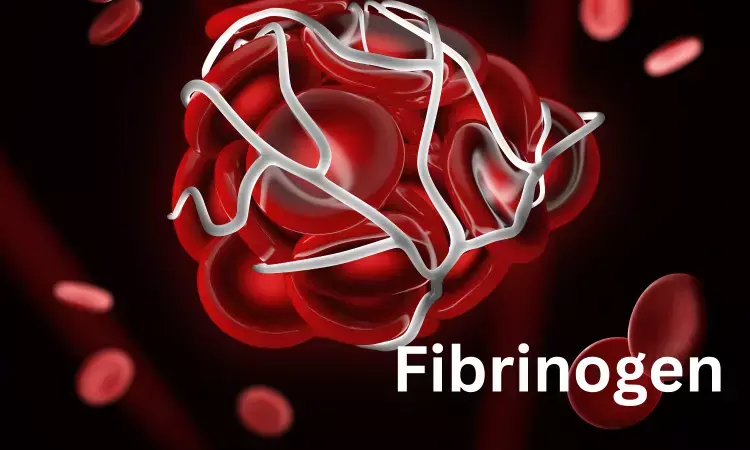- Home
- Medical news & Guidelines
- Anesthesiology
- Cardiology and CTVS
- Critical Care
- Dentistry
- Dermatology
- Diabetes and Endocrinology
- ENT
- Gastroenterology
- Medicine
- Nephrology
- Neurology
- Obstretics-Gynaecology
- Oncology
- Ophthalmology
- Orthopaedics
- Pediatrics-Neonatology
- Psychiatry
- Pulmonology
- Radiology
- Surgery
- Urology
- Laboratory Medicine
- Diet
- Nursing
- Paramedical
- Physiotherapy
- Health news
- Fact Check
- Bone Health Fact Check
- Brain Health Fact Check
- Cancer Related Fact Check
- Child Care Fact Check
- Dental and oral health fact check
- Diabetes and metabolic health fact check
- Diet and Nutrition Fact Check
- Eye and ENT Care Fact Check
- Fitness fact check
- Gut health fact check
- Heart health fact check
- Kidney health fact check
- Medical education fact check
- Men's health fact check
- Respiratory fact check
- Skin and hair care fact check
- Vaccine and Immunization fact check
- Women's health fact check
- AYUSH
- State News
- Andaman and Nicobar Islands
- Andhra Pradesh
- Arunachal Pradesh
- Assam
- Bihar
- Chandigarh
- Chattisgarh
- Dadra and Nagar Haveli
- Daman and Diu
- Delhi
- Goa
- Gujarat
- Haryana
- Himachal Pradesh
- Jammu & Kashmir
- Jharkhand
- Karnataka
- Kerala
- Ladakh
- Lakshadweep
- Madhya Pradesh
- Maharashtra
- Manipur
- Meghalaya
- Mizoram
- Nagaland
- Odisha
- Puducherry
- Punjab
- Rajasthan
- Sikkim
- Tamil Nadu
- Telangana
- Tripura
- Uttar Pradesh
- Uttrakhand
- West Bengal
- Medical Education
- Industry
Fibrinogen Depletion in Stroke Patients Under Bridging Therapy Increases Bleeding and Mortality Risk: Study

A new study published in the Stroke journal revealed a crucial link between early fibrinogen depletion coagulopathy (FDC) and an increased risk of hemorrhagic complications and death in stroke patients undergoing combined intravenous thrombolysis (IVT) and endovascular therapy (EVT), commonly referred to as bridging therapy.
This study involved 296 patients with acute ischemic stroke and large vessel occlusion evaluated the impact of FDC on hemorrhagic transformation (HT) and patient outcomes. FDC was defined as a sharp drop in fibrinogen levels, below 2.0 g/L at the start of EVT, coupled with a decrease of more than 1.0 g/L from baseline.
Among the cohort, 102 patients (34.5%) developed HT within 24 to 36 hours, while 54 (18.2%) expressed FDC. Also, FDC was almost exclusively seen in patients who received IVT, especially those treated with alteplase, highlighting a potential adverse effect of this thrombolytic agent.
Any hemorrhagic transformation was more than twice as likely in patients with FDC (adjusted odds ratio [aOR] 2.33). Symptomatic HT was over three times more likely (aOR 3.35). Parenchymal hematomas, a severe form of bleeding in the brain, were nearly three times more common (aOR 2.87). Three-month mortality was markedly higher among patients with FDC, with nearly a fourfold increase in odds (aOR 3.82).
The analysis illuminated a strong difference between alteplase and tenecteplase. FDC was identified in 39.3% of patients treated with alteplase (53 of 135), but none of the 26 patients who received tenecteplase developed this coagulopathy, suggesting a potentially safer profile for tenecteplase in terms of fibrinogen preservation.
Also, IVT was found to be a strong predictor of FDC: 32.9% of IVT-treated patients developed FDC when compared to just 0.7% of those who underwent EVT alone. These findings raised important considerations regarding the type and use of thrombolytics in bridging therapy protocols.
Overall, the study suggested that early monitoring of fibrinogen levels and careful selection of thrombolytic agents, particularly favoring tenecteplase over alteplase, may help reduce bleeding complications and improve survival rates in this high-risk population.
Reference:
Pauillac, N., Faille, D., Solo Nomenjanahary, M., Souvanheuane, M., Brikci-Nigassa, N., Ameri, A., Benoit, T., Delvoye, F., Maier, B., Ho-Tin-Noé, B., Mazighi, M., Desilles, J.-P., Seners, P., & NEUTROSTROKE study group. (2025). Fibrinogen depletion coagulopathy and hemorrhagic transformation in acute ischemic stroke treated with bridging therapy. Stroke; a Journal of Cerebral Circulation. https://doi.org/10.1161/STROKEAHA.125.051230
Neuroscience Masters graduate
Jacinthlyn Sylvia, a Neuroscience Master's graduate from Chennai has worked extensively in deciphering the neurobiology of cognition and motor control in aging. She also has spread-out exposure to Neurosurgery from her Bachelor’s. She is currently involved in active Neuro-Oncology research. She is an upcoming neuroscientist with a fiery passion for writing. Her news cover at Medical Dialogues feature recent discoveries and updates from the healthcare and biomedical research fields. She can be reached at editorial@medicaldialogues.in
Dr Kamal Kant Kohli-MBBS, DTCD- a chest specialist with more than 30 years of practice and a flair for writing clinical articles, Dr Kamal Kant Kohli joined Medical Dialogues as a Chief Editor of Medical News. Besides writing articles, as an editor, he proofreads and verifies all the medical content published on Medical Dialogues including those coming from journals, studies,medical conferences,guidelines etc. Email: drkohli@medicaldialogues.in. Contact no. 011-43720751


